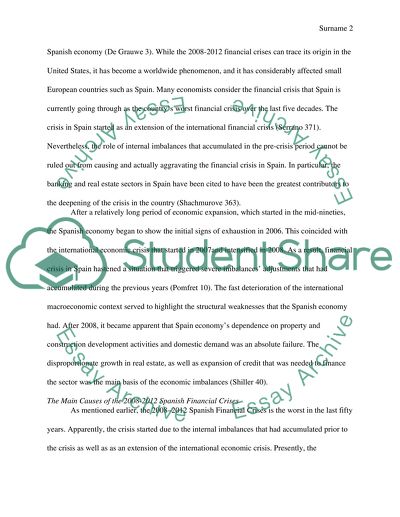Cite this document
(“2008:2012 Spanish financial crisis Essay Example | Topics and Well Written Essays - 3250 words”, n.d.)
2008:2012 Spanish financial crisis Essay Example | Topics and Well Written Essays - 3250 words. Retrieved from https://studentshare.org/finance-accounting/1455317-2008yt2012-spanish-financial-crisis
2008:2012 Spanish financial crisis Essay Example | Topics and Well Written Essays - 3250 words. Retrieved from https://studentshare.org/finance-accounting/1455317-2008yt2012-spanish-financial-crisis
(2008:2012 Spanish Financial Crisis Essay Example | Topics and Well Written Essays - 3250 Words)
2008:2012 Spanish Financial Crisis Essay Example | Topics and Well Written Essays - 3250 Words. https://studentshare.org/finance-accounting/1455317-2008yt2012-spanish-financial-crisis.
2008:2012 Spanish Financial Crisis Essay Example | Topics and Well Written Essays - 3250 Words. https://studentshare.org/finance-accounting/1455317-2008yt2012-spanish-financial-crisis.
“2008:2012 Spanish Financial Crisis Essay Example | Topics and Well Written Essays - 3250 Words”, n.d. https://studentshare.org/finance-accounting/1455317-2008yt2012-spanish-financial-crisis.


